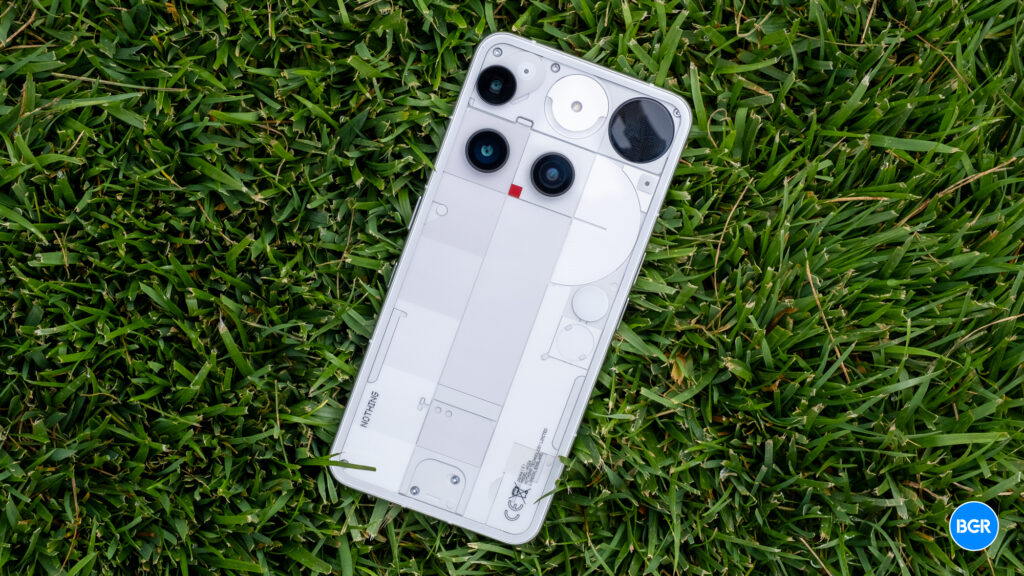The Nothing Phone (3) is more flagship than ever, but at this price, it faces very tough competition.
Pros
- Glyph Matrix is kind of cool
- Good performance
- Great battery life
- Software works well
- Nice-looking screen
Cons
- Not the best at anything
- Camera quality could be better
| Buy From | List Price | Sale Price | |
|---|---|---|---|
| $799 | $799 | See It |
The new Nothing Phone sure is something. To date, Nothing has focused on value-for-money — building phones that pushed into the upper echelons of the mid range, but largely stopped there. The new Nothing Phone (3), however, changes that — or at least, Nothing claims it does.
I’m going to rant about the word “flagship” a little. A flagship phone is the best device in a company’s lineup. In other words, the iPhone 16 is not a flagship — the iPhone 16 Pro (with the Pro Max) is. The Samsung Galaxy S25 Ultra is Samsung’s flagship (not the standard Galaxy S25). And, until now, the Nothing Phone (2) was Nothing’s flagship.
Nothing’s new flagship is not designed to compete with other premium flagship phones. It’s designed to compete with the base models of mainline phone series. Think iPhone 16 (not Pro), Galaxy S25 (not Ultra), and Pixel 9 (also not Pro).
But, it turns out, for the same money as those phones, you might get a little more with the Nothing Phone (3).
Nothing Phone (3) review: Design
I’ve quite liked the design of Nothing Phones of the past. They’re unique without being silly, with nerdy touches like a see-through back panel (those aren’t real components through there…) and the Nothing Glyph Interface LED array. But while those phones were unique in a way that wasn’t silly, I’m afraid the Phone (3) takes that extra step towards silliness.
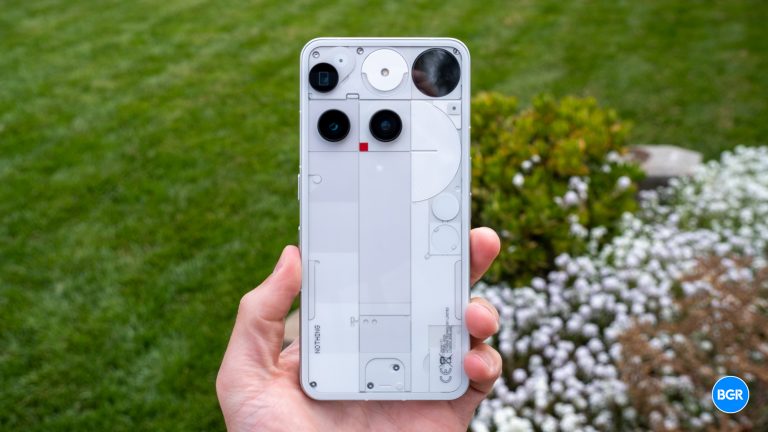
I’m not sure I can fully place why, though. Maybe it’s the seemingly random camera placement, with one camera all the way on the side that reminds me of the iOS 26 beta (which I’m running as I write this) more than I hope the final build of iOS 26 will in September. It just seems a little less thoughtful than previous Nothing Phone designs.
Some of the changes I don’t mind, though. Gone is the Glyph Interface, replaced with the Glyph Matrix. Despite being higher-tech, it takes up a lot less space on the back of the device, sitting in the top right-hand corner. It’s basically a tiny monochrome screen that can not only light up for things like calls and other notifications, but can be used for what Nothing calls “toys,” like a Magic 8 Ball and spin the bottle. It’s kind of fun, and allows for some customization, which is cool.
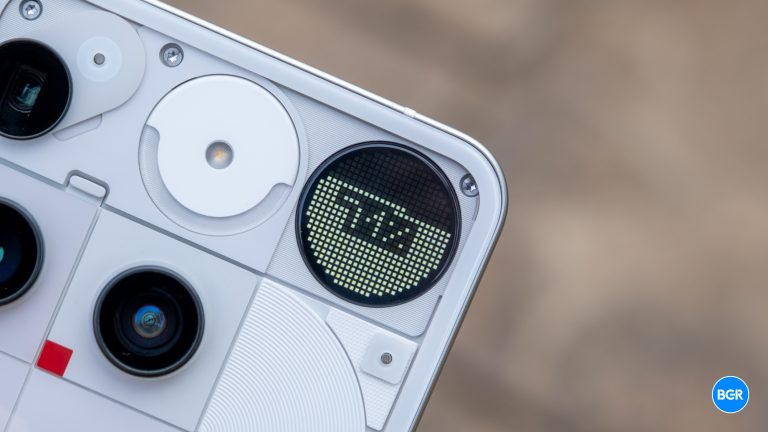
Other aspects of the device are new in the top-end Nothing phones, but not new in Nothing’s lineup as a whole. You get the Essential Key, which feeds into the Essential Space, where you can store screenshots and voice memos for AI to parse through and create things like calendar events and reminders. I’ll get into the software of it later, but for now, know that it’s still confusingly placed, and I still confuse it with the power button.
I don’t know if I would go as far as to say that the phone is ugly, but I do hope Nothing returns to slightly more thoughtful looks next time around.
Nothing Phone (3) review: Display
The display is where things start to look a little more like a flagship from another company. It sits in at 6.67 inches, with a 1260 x 2800 resolution (reasonably crisp) and up to a 120Hz refresh rate (nice and smooth). It looks great. It’s an OLED panel, so you’ll get deep blacks, since it can turn off individual pixels when there are black elements on the screen. And, with a 4500-bit peak brightness it gets easily bright enough for all settings, including outdoors. It feels smooth and responsive, and in use, there’s nothing to complain about.

But its actual tech isn’t quite as impressive as some others. Many other devices in this price range (except the iPhone…) have an LTPO screen that can not only get really high in refresh rate, but also really low. Ranging down to 1Hz allows those devices to save on energy when there isn’t much happening on the screen. The Nothing Phone (3) has what’s called an LTPS screen that can “only” reach 30Hz, instead of going all the way down to 1Hz. That won’t impact how the screen looks, but it will impact how power efficient it is. It’s not a big deal, and rest assured, when it comes to look and feel, the screen on this phone is a stunner.
Nothing Phone (3) review: Performance
Under the hood, the Nothing Phone (3) has a Qualcomm Snapdragon 8s Gen 4, coupled with either 12GB or 16GB of RAM. Those things mean that it’s easily powerful enough for anything you can throw at it in 2025, including mobile games, heavy multitasking, and so on. It never once skipped or froze, and not once did I think “this would have been better with a Snapdragon 8 Elite,” which is the highest-end processor you can get in an Android phone right now.
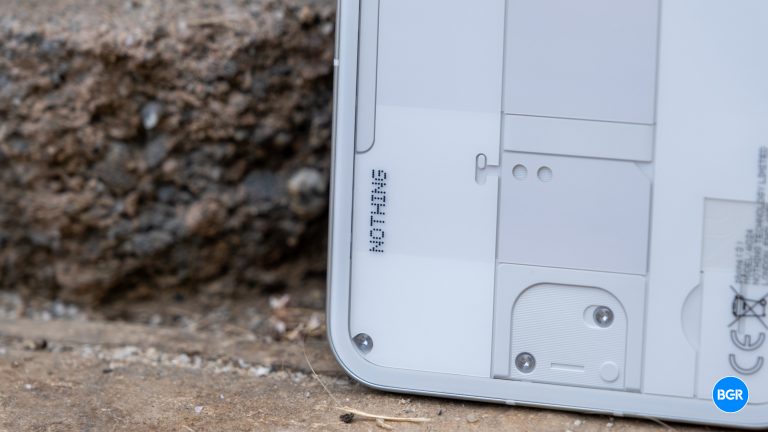
But it still would have been better, if you’re keeping score. The Galaxy S25 has a Snapdragon 8 Elite, and while you won’t feel the difference now, you might down the line as these phones age. Even a little extra headroom can make a difference on a phone that’s five years old. But, it’s hard to predict the future. Maybe software in 2030 will be advanced enough to feel the same on those two chips. But probably not.
Still, again, I never felt a lag or stutter on the Nothing Phone (3). It’s a great-performing phone. It’s just that you can get slightly better-performing phones at the same price.
Nothing Phone (3) review: Camera
The Nothing Phone (3) has a triple camera array, and it’s the first Nothing flagship to feature one. You’ll get three 50-megapixel cameras, including one main camera, one 114-degree ultrawide camera, and one 3x zoom telephoto camera.
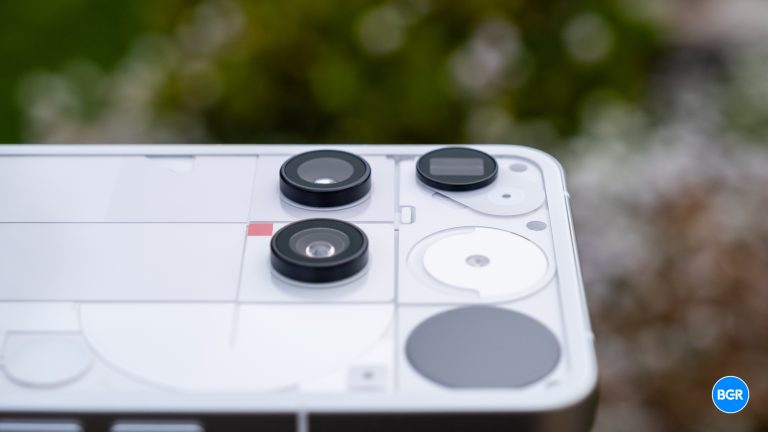
That’s a pretty versatile setup, and it’s one of the things that sets this phone apart from some other devices in this price range. Both the Pixel 9 and the iPhone 16 lack telephoto cameras, making their camera systems slightly less versatile than the Nothing device. Of course, the Galaxy S25 does have three cameras, at the same price.
The camera quality on offer by the Nothing Phone (3) is pretty good, but perhaps not quite at the same level as the Samsung Galaxy S25, iPhone 16, or Google Pixel 9 — all of which come in at the same price. In good lighting, the main camera is able to produce crisp and detailed shots the majority of the time, though it did struggle every now and then, seemingly randomly. Images weren’t quite as natural as some of the other devices, and the camera routinely pumped up the contrast to make for brighter colors and a little more pop. That’s not inherently a bad thing, but if you’re going for a natural look, the Nothing Phone (3) isn’t necessarily the best option.
The telephoto camera on the device does come in handy at times, but interestingly, at some levels of zoom, images taken with the iPhone 16 and Pixel 9 (which lack telephoto cameras), produced better photos overall. Some of the details were a little more crisp on the Nothing device, but it struggled to produce colors that were either natural or that simply looked good, blowing out highlights instead. At around 5x or 6x zoom, the phones without telephoto cameras produced better images than the Nothing Phone (3) overall. Of course, the Galaxy S25, which has a telephoto camera and solid image processing tech, fared the best here.
In most low-light scenarios, the Nothing Phone (3) did quite well, though at higher levels of zoom, it again struggled. With the main camera, images looked reasonably crisp and colorful, and while photos weren’t quite as detailed as those captured with any of the other three phones, they still looked good.
Basically, the Nothing Phone (3) has a solid camera. Is it the best in its price range? No, it’s not. Its telephoto camera means that it’s slightly more versatile than some of the others at times, but its image processing is a little unnatural and there are phones, like the Galaxy S25, that have both a telephoto camera and good image processing, at this price. But, again, you’re not getting a sub-par camera experience with the Nothing Phone (3).
Nothing Phone (3) review: Battery
The screen on the Nothing Phone (3) may not be as power-efficient as it could be, but thankfully, the Nothing Phone (3) still has excellent battery life. In fact, the battery life on this device beats most others in the same price range. It’s a 5,150mAh battery, which is larger than most other devices in this price range, and I think many users will be able to get two full days of use from it — especially lighter users.
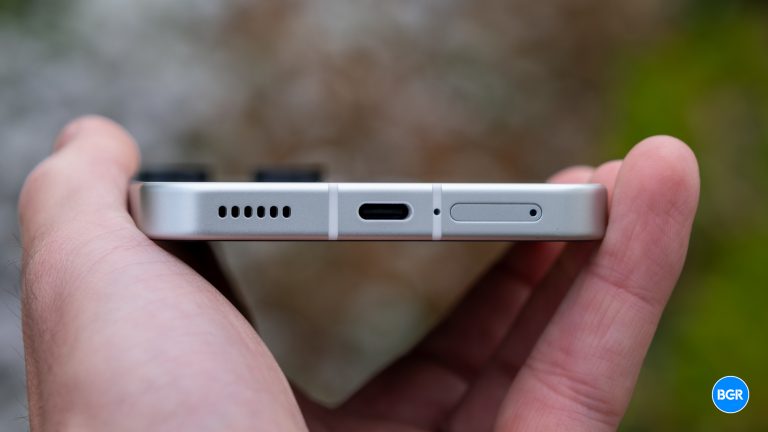
Power users, of course, still might need to charge each day, but those users won’t need to worry quite as much about their battery running out of juice before the day is up. If you charge overnight, you won’t need to think about battery with the Nothing Phone (3).
It has versatile charging, too. It supports 65W wired charging, which is very quick. It also supports 15W wireless charging, and reverse wired and wireless charging. The only thing I would have liked to see is full Qi2 support — the device doesn’t have the magnets to connect to Qi2 or MagSafe accessories like charging stands.
But very few that aren’t Apple do. On the whole, the Nothing Phone (3) excels when it comes to battery and charging.
Nothing Phone (3) review: Software
The Nothing Phone (3) ships with Nothing OS 3.5, which the latest version of Nothing’s Android skin designed to match the overall vibe of its hardware. As far as Android skins go, I generally like it. It’s not overly tweaked in a way that makes it confusing to Android users, and I like the subtle tweaks like the pixel matrix designs. Nothing also includes some great-looking widgets — even the weather widget looks cool.
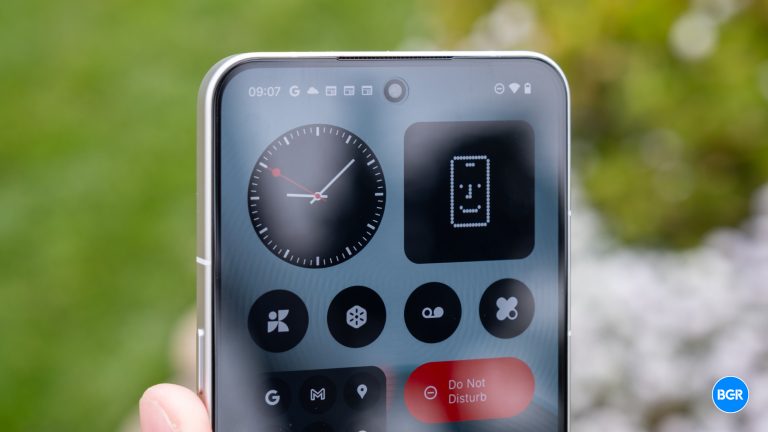
There are some extra apps and features. Like everyone else, Nothing has been pushing into AI. The Essential Key lets you quickly capture things like screenshots and audio memos, after which you’ll access that data in the Essential Space. It seems like it’s getting better at surfacing the right information as you use it, which is nice, and it should create things like to-do lists for you. There are some new features for the Nothing Phone (3) too. Notable is the new Essential Search, which can surface contacts, apps, files, and more, but also answer questions you might have using a generative AI chatbot.
While it worked well, I didn’t actually use it all that much. AI features like this still require the user to change their habits, and trust the tech to catch the data they want it to catch. Perhaps you’re quick to change habits and don’t mind that the device will miss things every now and then. If that’s you, then you might like the Essential Space, but I suspect most others won’t use it all that much.
Conclusions
The Nothing Phone (3) may not be designed to compete with other true flagship phones, but it still has a lot going for it. Sure, it doesn’t have the best processor or the best screen, but it has very good ones. And, while the iPhone 16 and Pixel 9 stick to dual camera systems, the Nothing Phone (3) has that telephoto camera for more versatility.
Here’s the problem, though. The Samsung Galaxy S25 exists. It does have the best processor (at least the best available to Android phones), along with a very good screen and a triple camera array. It also has seven guaranteed Android OS updates on the way in the years to come, compared to Nothing’s five. And, it comes in at the same price.
That doesn’t mean the Nothing Phone (3) should be ignored. Maybe you like the unique design, the Essential Key, or Nothing OS. If that’s you, then you’ll love the Nothing Phone (3).
The competition
But if that’s not you, the decision is a bit trickier. For the same money, the Galaxy S25 has a better processor, better camera, and more guaranteed software updates. Those aren’t insignificant. So much so that most people simply looking for a reliable do-it-all phone should just buy the Galaxy S25.
The others are worth considering too. The Pixel 9 offers better software, more updates, and a higher-quality camera, even if its camera is less versatile.
Should I buy the Nothing Phone (3)?
Yes, but consider the Galaxy S25, too.

